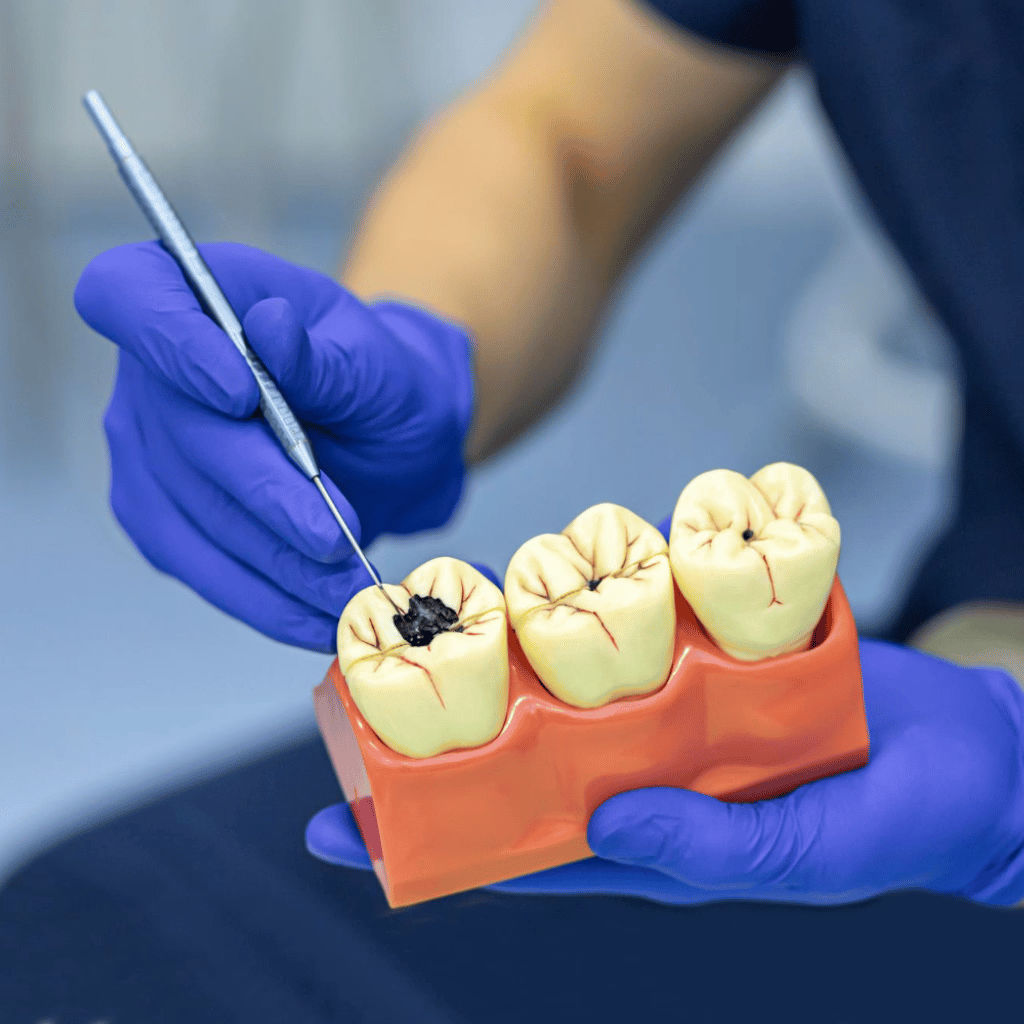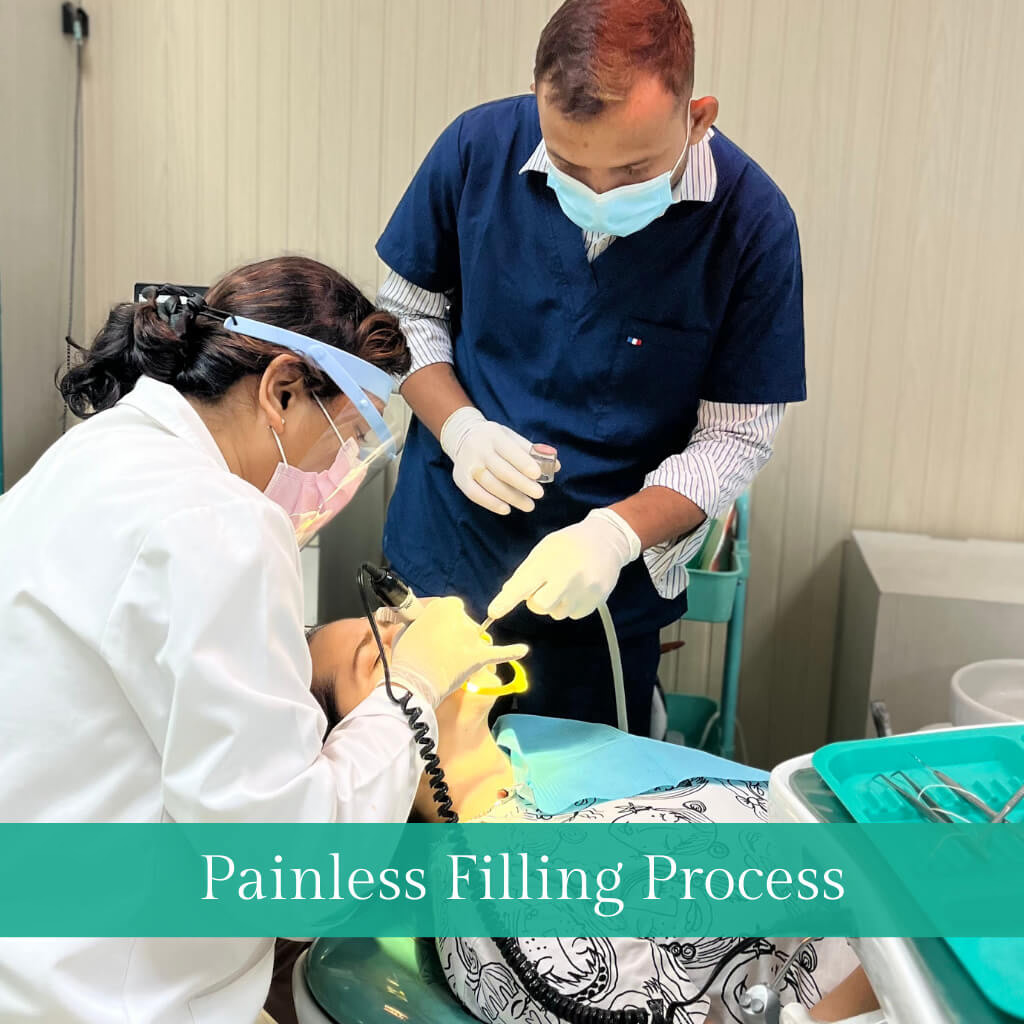Feeling anxious about getting a cavity filled? Understanding the procedure can calm your nerves and build your confidence!
Cavity fillings are an essential treatment for stopping tooth decay and restoring the tooth's function and structure. From the initial dental evaluation to the final finishing touches, being aware of each phase can enhance your dental visit, making it both more comfortable and informative. Here is a detailed overview of what to anticipate when getting a cavity filled.
Key Takeaways
Purpose: Cavity fillings are essential for halting tooth decay and restoring tooth structure and function.
Procedure: The dentist will clean the decayed and infected part of the tooth and fill the cavity with materials like composite resin or amalgam.
Anesthesia: Local anesthesia (such as lidocaine or articaine) can be administered to ensure the procedure is pain-free.
Post-care: Following instructions for post-procedure care helps ensure proper healing and longevity of the filling.
Regular Check-ups: Frequent dental visits are crucial for early detection of cavities and maintaining oral health.
Understanding Tooth Cavities
Tooth cavities, or dental caries, result when acid-producing bacteria in the mouth erode the tooth enamel. If not treated, cavities can progress deeper into the tooth, affecting the dentin and potentially reaching the pulp, causing pain and leading to infections. Regular dental examinations and diligent oral hygiene practices are crucial for preventing cavities and sustaining optimal dental health.
Preparing for the Procedure
Preparation for a cavity filling involves several steps to ensure a smooth and effective procedure:
- Examination and Assessment: The dentist will examine the affected tooth in detail and may use X-rays to evaluate the severity of the decay. This step is crucial for planning the treatment and selecting the appropriate filling material.
- Discussion and Consent: The dentist will explain the procedure, discuss the options for filling materials, and address any concerns you may have. Your consent is obtained before proceeding.
- Anesthesia: Local anesthesia (such as lidocaine or articaine) may be used to numb the part around the affected tooth, ensuring you are comfortable and pain-free during the procedure. The numbing process typically takes a few minutes.
Types of Dental Fillings
Different filling materials are available, each suited for specific needs and preferences:
- Composite Resin: These are tooth-colored fillings that blend smoothly with your natural teeth, making them ideal for front teeth and visible areas. They are applied in layers and hardened using a special curing light.
- Glass ionomer: These are fluoride releasing cements, typically white in color and known for their durability and affordability.
- Amalgam: Silver-colored and known for their durability and strength, amalgam fillings are often used for back teeth where chewing forces are most significant. Despite their noticeable appearance, they are cost-effective and long-lasting. However, the mercury content of these alloys makes them a questionable choice for filling
The choice of filling material depends entirely on factors like the cavity's size and location, the patient's dental history, aesthetic preferences, and budget considerations.
The Cavity Filling Process
The cavity-filling procedure involves several precise steps to ensure the decayed tooth is effectively treated and restored:
- Decay Removal: Using specialized dental instruments, the dentist carefully removes the decayed part of the tooth. This step is crucial to ensure that only healthy tooth structure remains and that all decay is eliminated. We at Hope dental and esthetic clinic employ use of magnification and ensure complete removal of decay. You can also see the completely cleaned tooth structure on a screen with the help of latest technology before proceeding with the restoration.
- Restoration of tooth structure with filling material: The selected filling material is inserted into the cavity. In the case of composite resin fillings, the tooth is prepared for bonding with the help of specialized agents and the material is layered, with each layer being hardened using a specialized light. This process ensures a strong bond and optimal aesthetics.
- Shaping and Polishing: After the filling is set, the dentist sculpts and polishes it to align with the tooth's natural contours. This ensures a comfortable bite and a smooth, natural appearance.
Post-Procedure Care
Following the cavity filling procedure, adhering to specific care instructions is crucial to ensure proper guidance for healing and the longevity of the filling:
- Recovery: If anesthesia was used for numbing the region, wait until the anesthesia wears off before eating to prevent accidentally biting your cheek or tongue. This typically takes a few hours.
- Sensitivity: It's typical to feel mild sensitivity to hot, cold, or pressure for a few days after the procedure. Over-the-counter pain relievers can ease this discomfort. If sensitivity persists beyond a few days, contact your dentist.
- Bite Adjustment: If you notice any discomfort or unevenness in your bite after the numbness subsides, contact your dentist for a possible adjustment. A properly adjusted bite is crucial for comfort and functionality.
- Depending on material used: Some cements take time to completely harden in the mouth, and eating or drinking too many fluids can compromise the setting of these materials. Your dentist will advise you of appropriate precautions to be taken depending on the material used to restore your cavity.
Maintaining Dental Health
To prolong the life of your fillings and maintain overall dental health, adhere to these practices:
- Oral Hygiene: Keep your oral hygiene at its best by brushing your teeth twice daily using fluoride toothpaste and making flossing a regular habit to remove plaque and food debris effectively. Additionally, a mouthwash can be integrated to help diminish oral bacteria if advised by your dentist.
- Dietary Considerations: Reduce consumption of sugary and acidic foods and drinks, as they can accelerate tooth decay and weaken your fillings. Instead, prioritize a balanced diet abundant in vitamins and minerals to promote optimal oral health.
- Regular Dental Visits: Arrange regular dental check-ups and cleanings every six months or as advised by your dentist. These visits are essential for early detection of potential issues and to maintain the integrity and functionality of your fillings.
Potential Positive Outcomes and Considerations
While cavity fillings are generally straightforward, there are several positive outcomes and considerations to keep in mind:
- Enhanced Oral Health: Filling cavities promptly helps prevent further decay and potential complications, preserving the health and integrity of your teeth.
- Improved Comfort: Timely and thorough treatment of cavities can relieve pain and discomfort, promoting a more comfortable and pain-free dental experience.
- Aesthetic Improvements: Modern filling materials like composite resin can improve the appearance of your teeth, providing a natural look that blends seamlessly with your smile.
- Durability and Longevity: Quality fillings, when combined with good oral hygiene practices, can last for many years, ensuring long-term dental health and functionality.
- Preventive Measures: Routine dental visits and expert guidance from your dentist are essential for maintaining peak oral health and preventing future cavities, thereby enhancing your overall well-being.
FAQ'S
Conclusion
In conclusion, understanding what to expect during a tooth cavity filling can alleviate anxiety and ensure a smoother dental experience. From the starting assessment to the final application of the filling, each stage is essential for restoring oral health and ensuring the longevity of your smile. By maintaining regular dental check-ups, practicing good oral hygiene, and following post-procedure care instructions, you can prolong the lifespan of your filling and prevent future dental issues. At Hope Dental & Esthetic Clinic, Noida, our commitment is to provide compassionate care and comprehensive dental solutions, ensuring your comfort and confidence in every visit.




